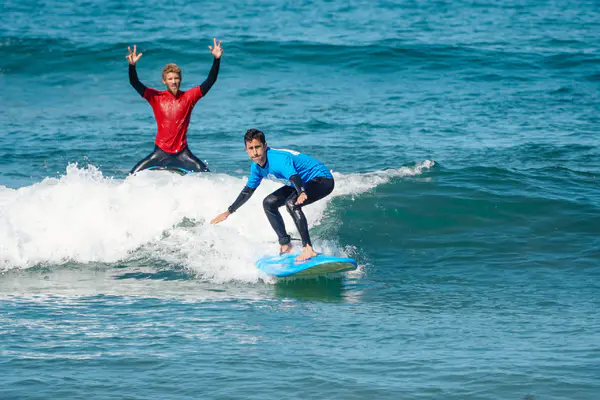Surfing is an exhilarating sport that connects you with nature. However, the ocean is home to various marine life, including sharks. Although shark encounters are rare, it’s essential to know how to avoid them to stay safe. This article provides comprehensive tips to minimize the risk of shark encounters while enjoying your time on the waves.
Understanding Sharks’ Behavior
Know When Sharks Are Active
Sharks are most active during dawn and dusk. Avoid surfing during these times to reduce the risk of encountering sharks. Sharks are also more active during and after storms, as rough seas stir up their food sources.
Sharks’ Feeding Habits
Sharks primarily feed on fish and marine mammals. They are attracted to areas where their prey is abundant. Avoid surfing near fishing areas, seals, or large schools of fish.
Sharks’ Sensory Abilities
Sharks have excellent senses of smell and hearing. They can detect blood and vibrations from long distances. Avoid entering the water with open wounds, and try to minimize splashing, which can attract sharks.
Choosing the Right Surfing Spots
Research Shark Activity
Before heading out, research the area’s shark activity. Some beaches are known for frequent shark sightings. Choose spots with fewer shark encounters and be aware of any recent sightings or attacks in the area.
Avoid Murky Waters
Sharks use their senses to hunt, and murky waters reduce visibility. They might mistake you for prey. Surf in clear water where you can see what’s around you, and sharks can see you clearly too.
Stay Away from Drop-offs and Sandbars
Sharks often patrol drop-offs and sandbars looking for food. Surfing in these areas increases the likelihood of encountering sharks. Stick to areas where the ocean floor has a gradual slope.
Surfing Gear and Clothing
Wetsuits and Colors
Sharks are more attracted to certain colors, especially bright or contrasting ones. Wear a wetsuit that blends with the water, preferably in dark or dull colors. Avoid wearing shiny jewelry, as it can resemble fish scales.
Use Shark Deterrent Devices
Several devices on the market emit electrical fields or magnetic pulses that can deter sharks. Consider investing in a shark deterrent device and attach it to your board or ankle.
Choose the Right Surfboard
The shape and size of your surfboard can also play a role. Opt for a board that doesn’t resemble the silhouette of a seal from below. Larger, flat boards are less likely to be mistaken for prey.
Surfing Safely
Surf in Groups
Sharks are less likely to approach a group of surfers. Surfing with others not only reduces the risk of shark encounters but also ensures that help is available in case of an emergency.
Stay Close to Shore
Surfing closer to the shore reduces the likelihood of encountering sharks, as they tend to stay in deeper waters. However, don’t get too close to the shore where waves break directly on the sand, making it difficult to surf.
Remain Calm and Quiet
If you see a shark, stay calm and quiet. Sudden movements and splashing can attract the shark. Slowly paddle back to shore without making abrupt motions.
See Also: Which Beach Has Water Sports in Goa?
Reacting to Shark Encounters
Stay Calm and Assess
If you encounter a shark, the most important thing is to stay calm. Panicking can lead to splashing and sudden movements that attract the shark. Assess the shark’s behavior; often, they are just curious and will swim away.
Defensive Posture
If the shark approaches, maintain eye contact and try to position your surfboard between you and the shark. Use your board as a shield if necessary. Do not turn your back on the shark.
Slow Retreat
Slowly and steadily paddle back to shore. Avoid frantic movements. If the shark appears aggressive, gently push the shark away with your board or hand while retreating.
Emergency Procedures
Know Emergency Contacts
Before you go surfing, familiarize yourself with the local emergency contacts. In case of a shark bite, immediate medical attention is crucial. Know where the nearest hospital or medical facility is located.
First Aid for Shark Bites
In the unfortunate event of a shark bite, apply pressure to stop the bleeding. Use a tourniquet if necessary and keep the injured person as calm and still as possible until help arrives.
Additional Tips and Considerations
Local Knowledge
Talk to local surfers and lifeguards. They often have valuable insights into shark activity and safe surfing practices in the area.
Surfing Conditions
Always check the surfing conditions before heading out. Avoid surfing in conditions that reduce visibility or increase the likelihood of shark presence, such as after heavy rains or near river mouths.
Stay Informed
Keep up with the latest research and developments in shark behavior and deterrents. The more informed you are, the better prepared you’ll be to avoid shark encounters.
Conclusion
While the risk of shark encounters is low, being prepared and knowledgeable can significantly reduce the chances of an incident. By understanding shark behavior, choosing the right spots and gear, surfing safely, and knowing how to react in an encounter, you can enjoy the waves with peace of mind. Stay safe, stay informed, and happy surfing!

